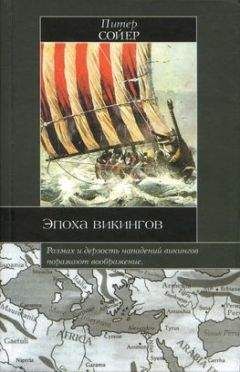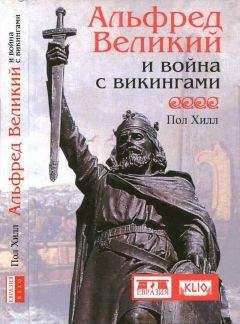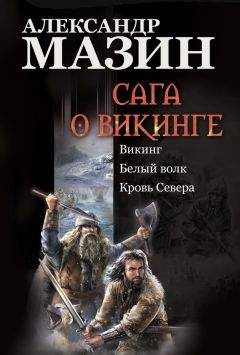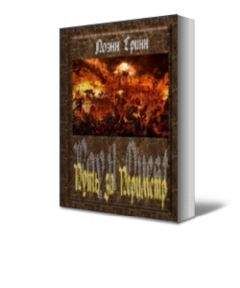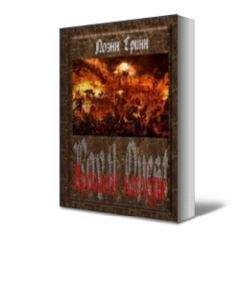223
Mynt och Myntfynd, pp. 102–105.
U. S. Linder Welin, NNA, 1938, pp. 113–114, 124.
U. S. Linder Welin, KHL, I, col. 184–185.
Skovmand, p. 41.
Birka I. Это, разумеется, не означает, что обсуждаемые захоронения старше 890 г., ср. с. 176.
U. S. Linder Welin, KHL, I, col. 186.
Ibid., col. 186–187.
AA, XXVI (1955), p. 171 прим. и карта на p. 172.
SG, II, no. 83, 268, 280, 517, 525, 531.
Skovmand, pp. 111–113.
Kolbjorn Skaare, NNA, 1961, pp. 20–21.
U. S. Linder Welin, KHL, I, col. 186–187; S. Bolin, Mynt och Myntfynd i Europa, pp. 119–123; id., Boken om Gotland, I. 132.
S. Bolin, Mynt och Myntfynd i Europa, pp. 396–397; id., Studier over statamakten och penningsvasendets grundprinciper i del romerska kejsarriket och den aldre madaltides tre kultursfarer (неопубликовано), pp. 300–314; id., Scandinavian Economic History Rewiew, I (1953), pp. 19–22; U. S. Linder Welin, KHL, I, col. 185–186.
См. c. 298–299.
Конечно, в эпоху викингов и на Руси, и в Скандинавии серебряные монеты переплавлялись на украшения. Суть здесь в том, что изменение, произошедшее в IX веке с русскими кладами, едва ли можно объяснить внезапным увеличением объема, переплавки.
См. с. 265.
Профессор Болин заявил, что экспорт мусульманского серебра из России продолжался до 970 г., Mynt och Myntfynd i Europa, pp. 147–150, 479–480, и Boken om Gotland, I. 133.
Все одиннадцать кладов, обозначенных на карте в АА, XXVI (1955), р. 172, относятся к периоду 900–930 гг. Из всех британских кладов куфические монеты содержатся еще только в кладах из Кройдона, закопанных в 874–875 гг. и содержащих один дирхем Харун ал-Рашида и несколько фрагментов куфических монет, J. D. A. Thompson, Inventory of British Coin Hoards, A. D. 600-1500 (1956), no. Ill; и из Маккри, Ислэй, закопанных в 960–970 гг. с одним куфическим фрагментом, Proceedings of the Society of Antiquaries of Scotland, I (1851-54), pp. 74–81.
Mynt och Myntfynd i Europa, p. 247, 360–361, 472–478; Boken om Gotland, I. 132–133.
SG, II, no. 105; S. Bolin, Mynt och Myntfynd i Europa, p. 240.
Mynt och Myntfynd i Europa, pp. 478–480; Boken om Gotland, I. 133.
См. c. 161–163.
U. S. Linder Welin, KHL, I, кол. 189.
Это очень отчетливо прослеживается в воспроизведенной здесь таблице профессора Болина, с. 212.
См. с. 292.
U. S. Linder Welin, KHL, I, col. 189–190.
S. Bolin, Mynt och Myntfynd i Europa, pp. 493–496; U. S. Linder Welin, KHL, I, col. 189–190.
SG, I. 248–249; Skovmand, pp. 17–23.
P. Hauberg и J. Ostrup, «Terslev-fundets Monter», ANOH, 1914, pp. 63–75; cp. R. H. M. Dolley, NNA, 1957-58, p. 32, 37.
EHD, pp. 234–235.
См. c. 273–274.
KHL, II, кол. 428–431.
Полубрактиты представляют собой двусторонние монеты, настолько тонкие, что оттиск на каждой из сторон проглядывает на обороте. Лучшее введение в обширную литературу о них содержится в кн.: N. L. Rasmusson, «Bifkamynt och Hedebymynt», KHL, I, col. 588–594.
По поводу скандинавских монет см. ред. Svend Aakjaer, Mont (Nordisk Kultur, XXIX, 1936); Brita Maimer, «А Contribution to the Numismatic History of Norway during the Eleventh Century», Commentationes de Nummis, I (KHVAA Handlingar, Antikv. Ser. 9, 1961), pp. 223–376. См. обзор некоторых последних работ в кн.: Kolbjorn Skaare, «Vikingtidsnumismatikk», Nordisk Numismatisk unions Medlemsblad, 1961, pp. 189–197, и статьях различных авторов в KHL.
Abbon, Le Siege de Paris par les Normands, ред. Henri Waquet (Les Classiques de l'Histoire de France au Moyen Age, 1942), pp. 28–30, lines 177–195.
Annales Bertiniani, ред. G. Waitz (SS. R. G., 1883), p. 25.
The Making of Europe (London, 1948), pp. 190–191.
Anglo-Saxon England (Oxford, 1947), p. 242.
H. Shetelig, VA,I. 122; H. Waquet,op. cit.,c. 24 прим. I.
См. c. 222–239.
См. c. 147–149.
См. c. 205–206.
Ine 13, 1; F. Lieberman, Die Gesetze der Angelsachsen, I (Halle, 1903), p. 94; F. L. Attenborough, The Laws of the Earliest English Kings (Cambridge, 1922), pp. 40–41.
F. Lot, UArt Militaire et les Arrhees au Moyen Age, I (Paris, 1946), pp. 336–337.
J. H. Ramsay, «The Strength of English Armies in the Middle Ages», English Historical review, XXIX (1914), pp. 221–227.
См. c. 28–29.
См. c. 29.
Ред. Waquet, p. 14, lines 28–30.
См. c. 120–125.
См. c. 110.
Эта битва была рассмотрена в кн.: F. P. Magoun, Modern Language Review, XXXVII (1942), pp. 409–414.
William of Malmesbury, Historia Novella, ред. К. R. Potter (Nelson's Medieval Classics, 1955), pp. 73–74.
По поводу битвы при Бриссарте см. F. Lot, op. cit., I. 99.
Stenton, op. eit., p. 241 прим.; Lot, op. cit., I. 98.
Op. cit., p. 577.
I. C. Gould, «Ancient Earthworks», Victoria History of the County of Essex, I. 286–287.
C. Fox, The Archaeology of the Cambridge Region (Cambridge, 1923), p. 302.
English Historical Review, XXVII (1912), pp. 512–513.
Этельред II Нерешительный — англосаксонский король, правивший в 978-1013, 1014–1016 гг. — Прим. ред.
P. Norlund, Trelteborg (1948); C. G. Schultz, «Aggersbofg, vikingelejren ved Limfjorden», Fra Nationamuseets Arbejdsmark, 1949, pp. 91-108; O. Olsen, Fyrkat (Nationalmuseets BIS Bog, 1959). Краткий обзор см. в: J. Brondsted, Danmarks Oldtid, III, Jernatderen (Kobenhavn, 1960), pp. 363–369.
Norlund, op. cit., pp. 113.
Lauritz Weibull, «Fornborgen Trelleborg», Scandia, XX (1950), pp. 283–289, особенно p. 286.
См. c. 98.
Кнут II — датский король, правил в 1080–1086 гг. Убит мятежным народом в церкви за то, что ввел постоянный церковный налог. — Прим. ред.
R. Poupardin, Monuments de Vhistoire des abbayes de Saint-Philibert (Paris, 1905), pp. XXV–XL.
L. Delisle, Litterature Latine et Histoire du Moyen Age (Paris, 1890), pp. 17–18.
Ср. M. Prou, Les Monnaies Carolingiennes (Paris, 1896).
F. Lot, Bibliot he que de l'E: cote des Chartes, LXIX (1908), pp. 21–22.
Тан — высшая знать в англосаксонской Англии. — Прим. ред.
EHD, pp. 273–274.
Rose Graham, «The History of the Alien Priory of Wenlock», Journal of the British Archaeological Association, 3-е сер., IV (1939), p. 119.
W. de Gray Birch, Cartularium Saxonicum, II (London, 1887), no. 587.
См. с. 32–33.
М. D. Knowles, The Monastic Order in England (Cambridge, 1940), p. 69–70.
W. Dugdale, The Antiquities of Warwickshire, 3-е изд. (Coventry, 1765), p. 264.
EHD, p. 818.
The Latin Charters of the Anglo-Saxon Period (Oxford, 1955), p. 40.
R. R. Darlington, English Historical Review, LI (1936), pp. 422–423; D. C. Douglas, Proceedings of the British Academy, XXXIII (1947)+ pp. 111–112.
Irish Art in the Early Christian Period, 2-е изд. (London, 1947), p. 86, 154.
EHD, pp. 190–191.
J. Dhoroit,Etudes sur la naissance des principautes territoriales en France (Brugge, 1948), p. 28 прим.
F. T. Wainwright, «AEthelflaed Lady of the Mercians», The Anglo-Saxons, ред. P. Clemoes (London, 1959), pp. 53–69.7.1
A. Campbell, «Two Notes on the Norse Kingdom in Northumbrian», EHR, LVII (1942) pp. 85–97; D. Whitetock, «The Dealings of the Kings of England with Northumbria in the Tenth and Eleventh Centuries», The Anglo-Saxons, ред. P. Clemoes, pp. 70–88.
E. Ekwall, Scandinavians and Celts in the North-West of England (Lund, 1918). Относительно Шотландии см.; W. F. H. Nicolaisen, «Norse Place-Names in South-West Scorland», Scottish Studies, IV (1960), pp. 49–70.
F. Liebermann, Die Gesetze der Angelsachsen, I (1903), p. 216.
Liebermann, op. cit., II. 347–348.
VI Atr 37 — Liebermann, op. cit., I. 256; A. J. Robertson, The Laws of the Kings of England from Edmund to Henry I (1925), p. 102.
O. S. Anderson, The English Hundred-Names (Lunds Universitets Arsskrift, 1934), pp. XXI–IV.
